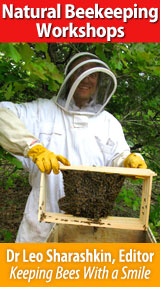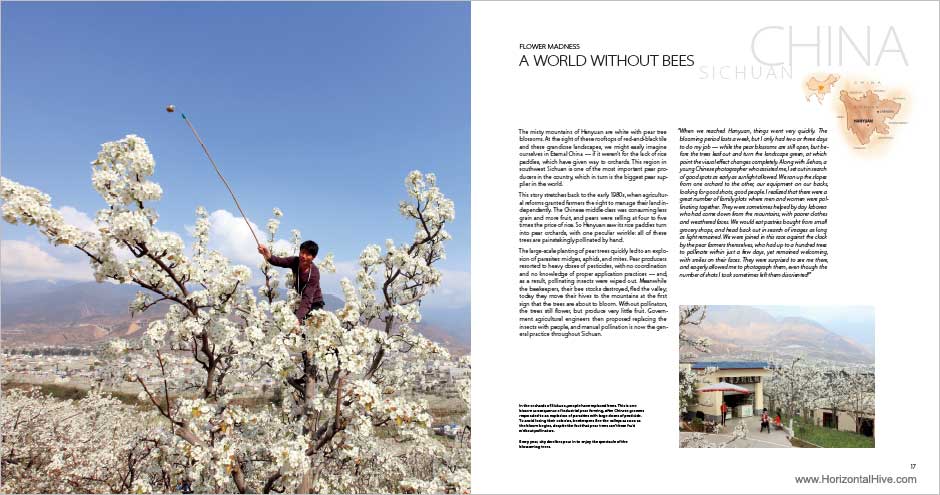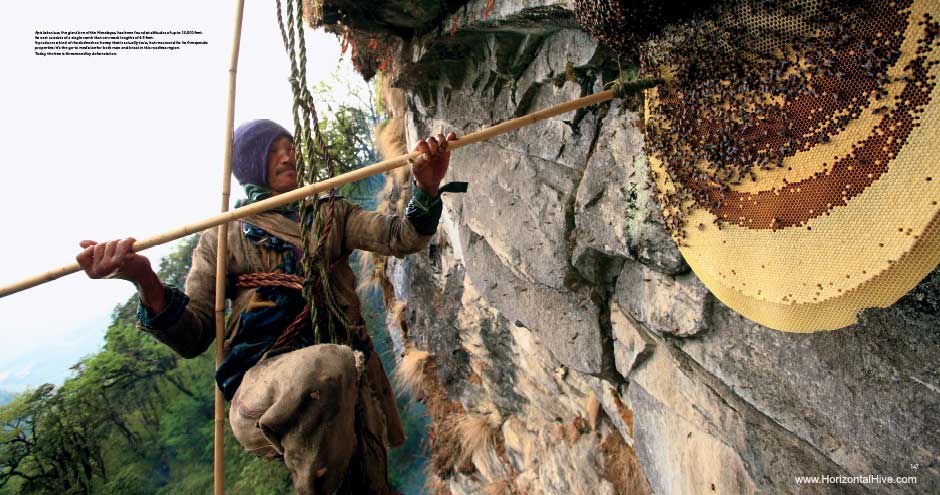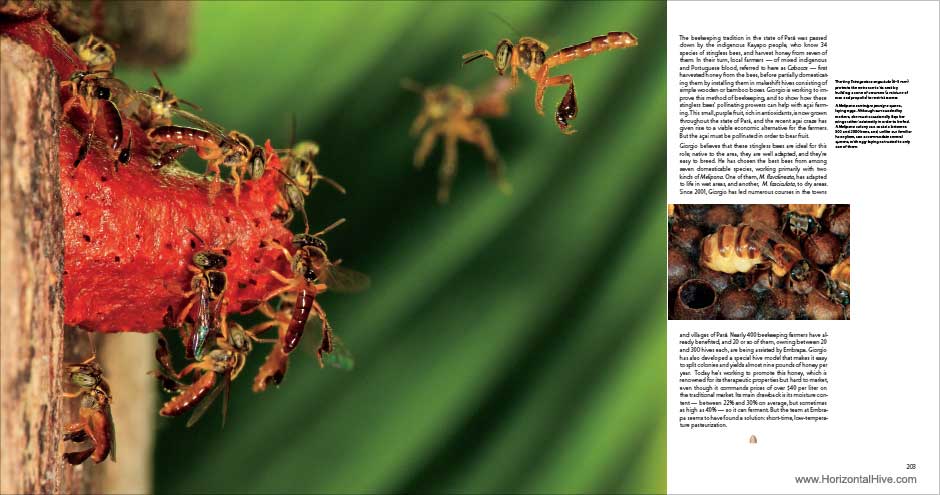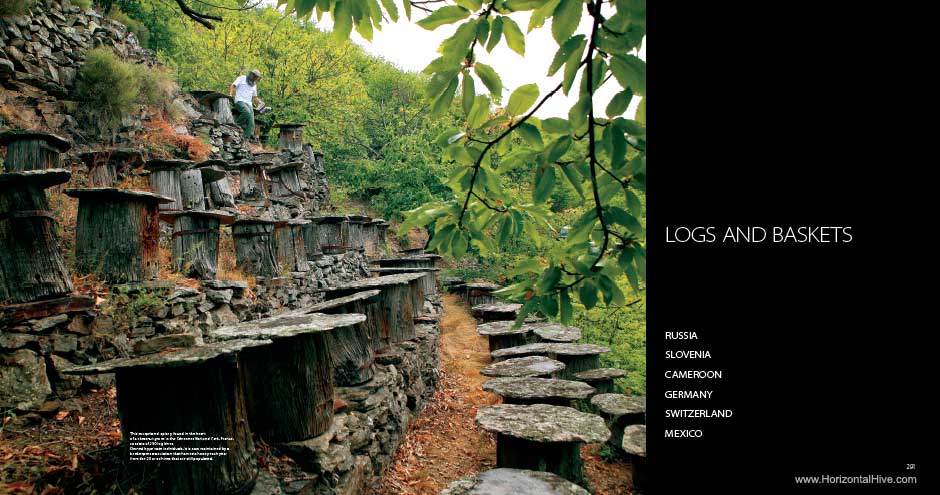The internationally acclaimed honeybee photographer Eric Tourneret spent fifteen years traveling the world to capture the breathtaking diversity of bees and beekeeping traditions on six continents.
You’ve never seen a book like this! It has it all:
- Truckloads of hives — industrial beekeeping in America
- Chinese farmers pollinating orchards by hand after bees disappear
- Getting honey from killer bees in Panama
- Scaling cliffs to reach honeycombs in Nepal
- Straw skeps in Germany and Romania
- The surreal honey ants of the Australian desert
- Honey myths from the heart of the African jungle
- Rooftop urban beekeeping in Hong Kong
- $50/lb honey in upscale groceries in Turkey
- The most exotic stingless bees of the tropics
- and SO MUCH more!
Shot in 23 countries, Honey From the Earth is an enchanted journey to discover the sweetness and beauty of our planet, and a powerful plea to protect and restore Mother Earth.
China • The United States • Congo • India • Cameroon • Indonesia • Ethiopia • Romania • Argentina • Nepal • Australia • New Zealand • Turkey • France • Great Britain • Germany • Brazil • Panama • Costa Rica • Russia • Slovenia • Switzerland • Mexico
The French original has become a massive bestseller in Europe. Now enjoy the English version, masterfully translated & edited, and featured in American Bee Journal and Bee Culture.
“Honey From the Earth is an immense accomplishment. I bet it will be a huge success in English.”
— Dr. Tom Seeley, author of Honeybee Democracy
Review by Stephen Fleming, Bee Craft magazine
Originally published in French in 2015, Honey from the Earth has just become available in English. This huge 350-page photo-illustrated volume weighing in at close to three kilos might at first glance be mistaken for a coffee-table book, but that would be a cruel and misguided insult. This is a glorious book that will be treasured in 100 years’ time as a vivid account of the diversity of beekeeping across the world at the beginning of the twenty-first century.
Eric Tourneret has spent 15 years travelling the globe capturing on camera the magic and the trauma of bees in our time. He can’t be just a photographer – he scales cliffs and trees to frightening heights to capture the most authentic and unusual pictures of bees and beekeepers you are ever likely to see. Even his encounter with Africanised bees is dramatically caught on camera in a picture that every beekeeper will understand.
Accompanying the images is some beautifully chosen text that gives the context of many of the photographs. The main contributor is Sylla de Saint Pierre, Tourneret’s spouse, but also in the mix is an array of talent that includes Tom Seeley, Jurgen Tautz and Dennis vanEngelsdorp.
From cliff-hanging shots of honey hunting in Nepal to Hong Kong skyscraper-top apiaries and from bohemian beekeeping of Romania to the industrialised pollination operations in America, Tourneret and de Saint Pierre take us on a 31-country tour. Everyone will have their favourite episode of storytelling. I will highlight just three: the human hand-pollinators of the visually beautiful bee-free pear orchards in Sechuan where beekeepers decline to take colonies because the bees won’t survive the polluted environment; the oilseed rape flower festivals in China where tourists buy the unripened honey harvest in the apiaries; and the honey rangers of the Ural Mountains who are less concerned with varroa than bears – and mop up every drop of honey to avoid inquisitors. Every feature has an intriguing, shocking, inspirational or even bucolic story.
I didn’t want to race through this book; I wanted to savour each page like precious fine honey. This is the world we live in today, but many of Tourneret’s captured moments are slipping away, never to be seen again. The environmental consequences of our actions today are ever-present. This is a prize volume at a premium but justifiable price. Buy it if you can, and, whatever your age, keep it in good condition for your grandchildren’s children so that they can understand how bees and humans once interacted.




